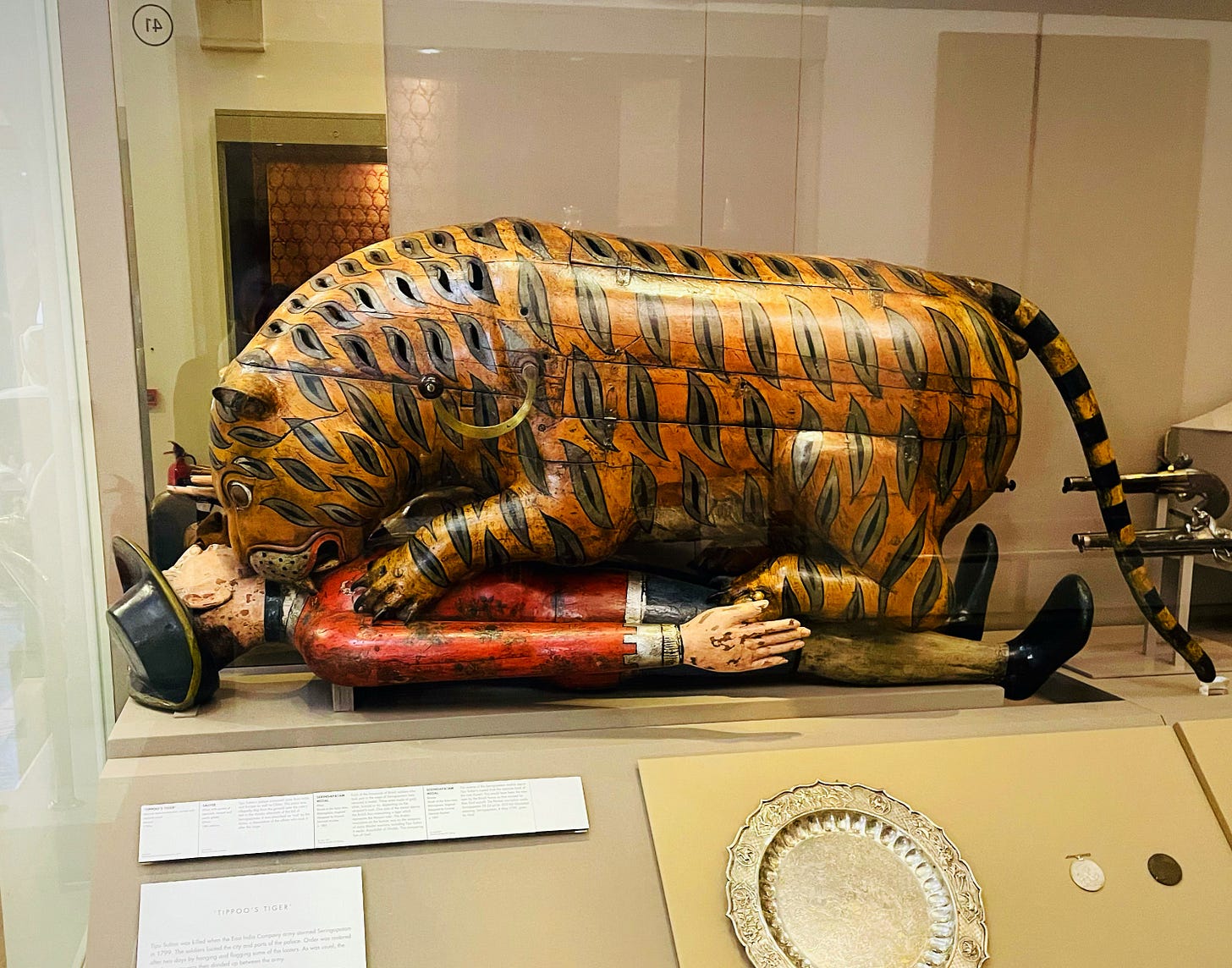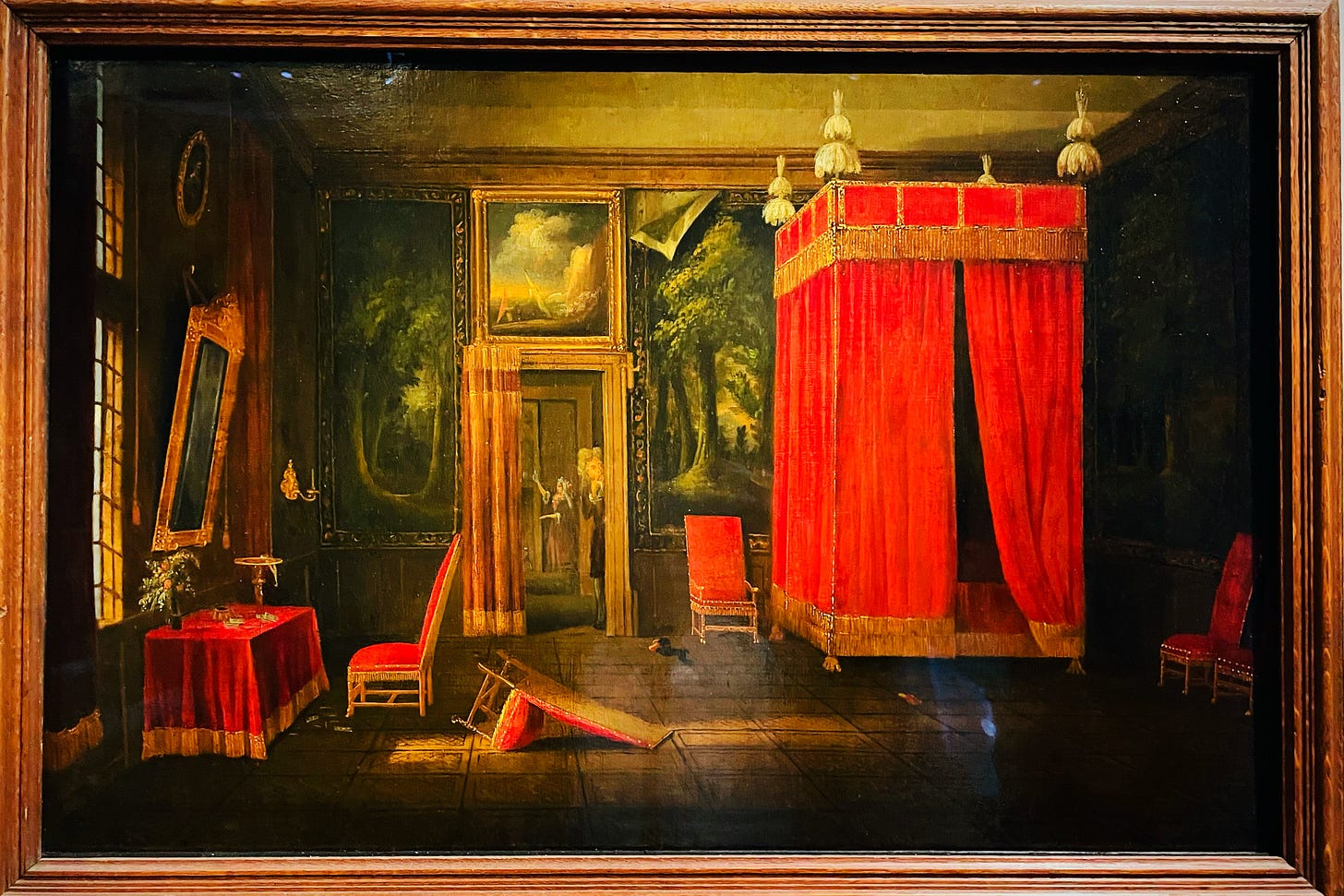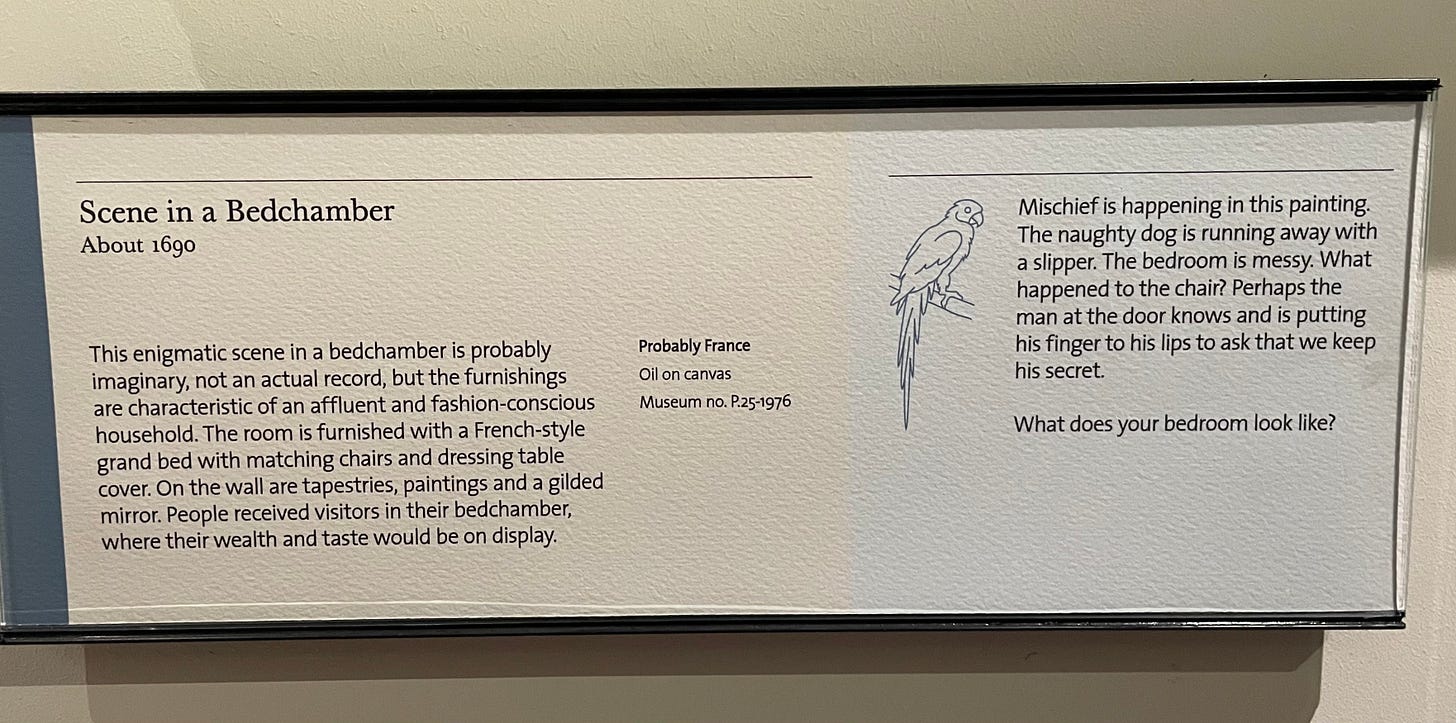Walking around a museum
Chalking up the miles, one Monet at a time
If you’re in the northern hemisphere, like me, you might find yourself wintering right now. A lot of mammals hibernate at this time of year and I think many of us humans would do the same given half a chance.
I’m not a fan of winter. I don’t like feeling cold. I don’t like being wet. And if I’m both at the same time then there’s a good chance that Sulky Sarah will make an appearance. I struggle to find the motivation to go outside in winter, let alone for a long walk. So if you’ve ever felt the same way, then read on because I’ve got you covered – literally – with this edition where we stay inside for our walk.
Tip: we’re going to combine the writing and walking this time, so read the whole post before you set off – and take a notebook and pencil with you.
Walking
London’s V&A is the world’s leading museum of art and design. It’s home to more than 2.8 million objects, books and archives, covering architecture, furniture, fashion, textiles, photography, sculpture, painting, jewellery, glass, ceramics, book arts, Asian art and design, theatre and performance.
The buildings span 12 acres of land, are over a third of a mile in circumference, and include 7 miles of galleries.
7 Miles. Now that’s a fair trek by any standard. So when I discovered that the museum has self-guided walking trails, I had to check it out.
Each trail has a theme, covering things like architectural wonders, African fashion and refugee stories. I decided to follow the collection highlights trail, which led me to objects like ‘Tippoo’s Tiger’ in the photo at the top of this post. It was made for Tipu Sultan, ruler of Mysore in South India from 1782 to 1799. You can’t see from the photo, but there’s an organ hidden inside the tiger's body and when the handle is turned, the man's arm lifts up and down and the organ makes noises intended to imitate his dying moans.
Then there’s this reproduction of a fig leaf, which was made to cover up the naughty bits on the cast of Michaelangelo’s David. Apparently, the original leaf was made after Queen Victoria was shocked by the cast’s nudity. Imagine the stories that sad-looking fig leaf could tell.
My wander eventually led me to this intriguing oil painting called Scene in a Bedchamber, painted by an unknown artist. There’s so much going on there, isn’t there? I’m just as fascinated by what might be at the end of that forest path as I am by what might be going on behind the curtains.
It even comes with its very own creative prompt in the description that goes with it:
So for your walk this time, I invite you to stay warm and dry while you rack up your step count, exploring a museum or gallery.
Many museums and galleries around the world have self-guided tours or trails, including The British Museum in London, the Louvre in Paris and the Prado in Madrid. And lots of them have virtual tours, too, so if you can’t get out and about you can take a virtual walk instead. Search for ‘visitor trails’, ‘self-guided tours’, ‘audio tours’ and ‘virtual tours’ to see what’s out there. Or make your own trail by searching the museum or gallery’s site for its list of highlights then using their map to help you find them. Or you could just wander around and see what grabs your attention along the way.
Writing
This time we’re going to try a bit of ekphrastic writing. Ekphrasis is a fancy and formal word to describe writing something in response to an object or image. The written responses are often poems or verse – but they don’t have to be. I think it can be really interesting to write spontaneously, noting down your instant reactions to the art or object you’re observing.
So as you’re taking your walk, if you see something that captivates you, stop and look at it for a while. Many museums and galleries have seats around to make that easier – the last time I visited the V&A I saw a woman sitting on a bench, making a pencil sketch of a statue. And in the Japanese gallery a group of school kids were also drawing various objects. So if you feel like drawing rather than writing then try that. The idea of these walks is to spark creativity and it doesn’t always have to come in the form of words.
As always, I hope you enjoy your walk. Please let me know how it goes by adding a comment – and sharing a snippet of your writing or a sketch. I love hearing people’s responses to these exercises.
Happy walking and writing until next time,
Sarah
The Writer’s Walk is free to read but not free to produce. If you’ve been inspired by it, please consider leaving a tip on Ko-fi to help me cover the costs.
Liking, commenting on and sharing this edition is also a great way to show your support. Thank you 💚
More from The Writer’s Walk
If you enjoyed this, you might also like the edition on geocaching:







Sarah, there seems to be a conscious or subconscious theme to your wanderings today. What with organs going up and down, fig leaves sparing blushes and things going on behind closed curtains.
I did find myself wondering about those moans emanating from below the tiger.
Enough of my musings, your walk reminded me of one of my favourite walks in Cadiiz along a shoreline dominated by a couple of trees enjoined in an arboreal embrace, leaves dropping as nature takes its course. Dogs and their owners love them and often pay their respects and spend time there.
My first pet was a dog called Mischief who once won a string of sausages as a prize. Later in life I had a gorgeous cockapoo called Paco who would wander around bedchambers and steal single socks.
I wrote about my trees in a different 26 project here
https://26project.org.uk/26trees/?p=66
Paul
Thanks for this post. I'd been thinking about using objects in our local museum as poem prompts this year and this has definitely inspired me to do something about it!